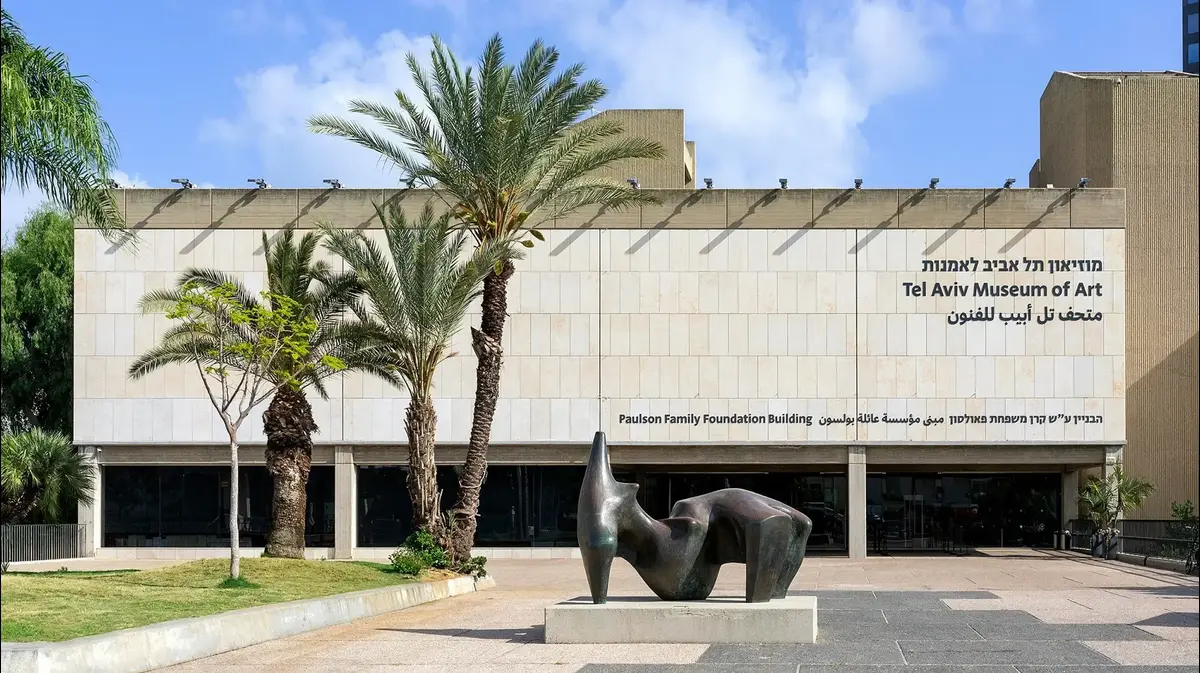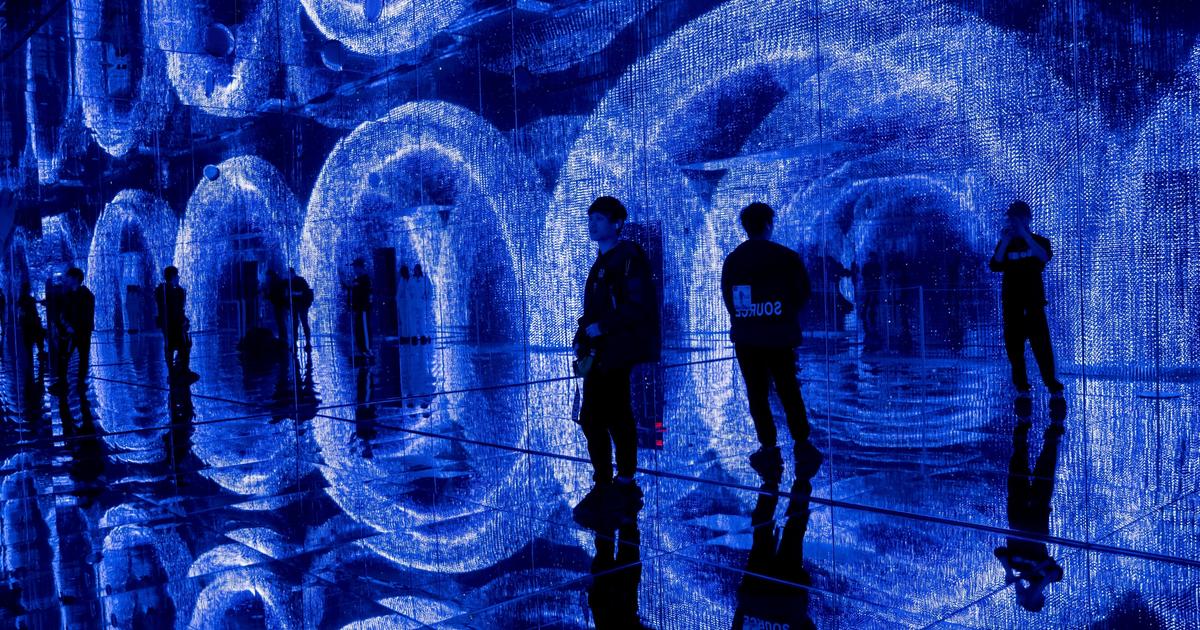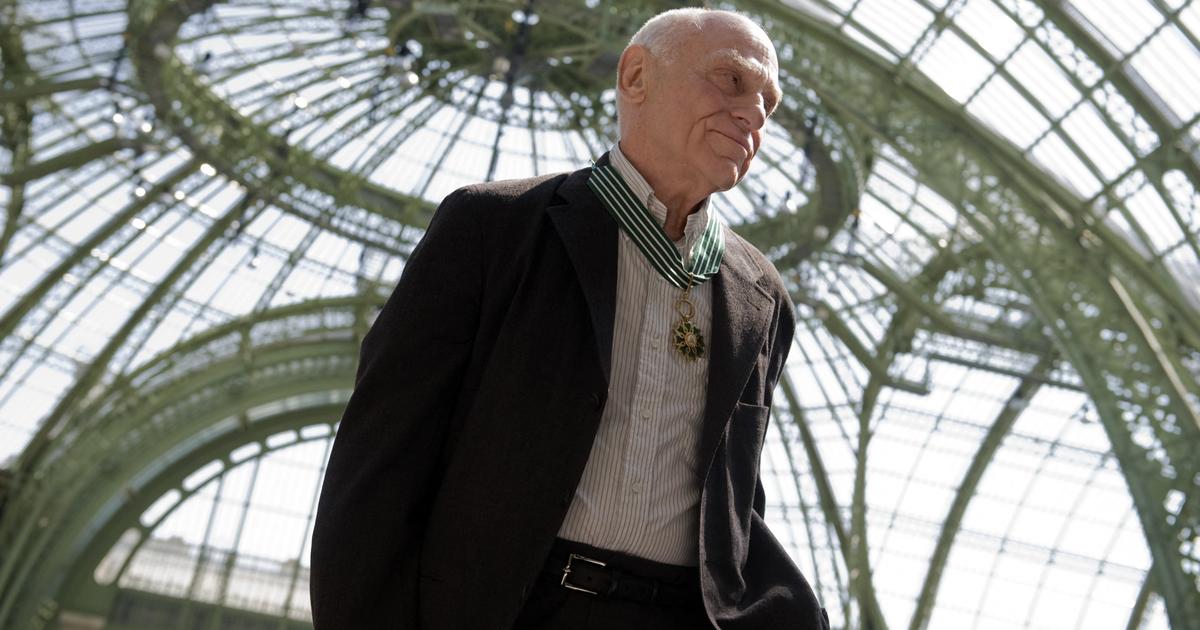Temporary exhibitions dedicated to women to open the annual program of a museum with pageantry.
New policies for the purchase of works in which the requirement is parity.
Changes in the cartouches to make patrons visible and make sexist references disappear.
Appointments of directors at the head of museums.
In the last five years, art has not been refractory to the push of the new feminist wave.
But when going to the fine print, a question arises: does each of these initiatives represent a real advance towards equality or are they just patches that offer that appearance?
More information
If you can't name three women artists... you're not alone
One of the most recurring examples of real progress in the sector is that of the Andalusian Center for Contemporary Art (CAAC) in Seville with the decision to incorporate the gender perspective into its purchasing policies and exhibition programming a decade ago.
At the moment they have not achieved parity: of the 611 artists in the collection, 494 are men and 117 women.
“We calculate that in 2010 there were no more than 40 women, and the generations of artists that stood out between the fifties and eighties of the 20th century are mostly male.
Since the 1990s, there has been more balance, but we still have a lot to do," acknowledges its director, Juan Antonio Álvarez Reyes, about work that began even earlier, in 1997, with the merger between the CAAC and the Museo de Contemporary Art of Seville.
Works by Concha Jerez, at the Andalusian Center for Contemporary Art (CAAC), in Seville.PACO PUENTES
At that time, there were no female names in his collection dating from the 1950s to the 1970s.
In other words, the absences of Sevillian Teresa Duclós and Carmen Laffón, greatest exponents of the 20th century Andalusian school of Realism, were embarrassing;
the artist based in Granada, Soledad Sevilla, a great exponent of geometric abstraction;
and Concha Jerez from the Canary Islands, Velázquez Prize for Plastic Arts and pioneer of conceptual art in Spain, among many others.
Those gaps in the History of Art have been repaired with acquisitions and donations from the artists themselves who are now included in the most important contemporary art collection in the region and will continue this year with large purchases in Seville, Jerez, Pepa Caballero and, which is perhaps the most important,
Estrella de Diego, a Fine Arts academic, patron saint of the Prado and columnist for EL PAÍS, has been "thinking about these issues" for 40 years, not because she is a feminist, which she also confesses, but because "artists are part of history ”.
For this reason, she celebrates each step, but at the same time considers that "these changes are somewhat due to fashion."
That is why she asks: "If fashion passes, do we go back to where we were?"
The term "fashion" is also heard in the Thyssen Museum in Madrid when they remember that, before there was talk of a trend, the art gallery organized the
Heroínas
exhibition in 2011, before the Me Too movement.
Guillermo Solana, artistic director, assures this newspaper that his mission has always been to celebrate "at least two temporary events dedicated to women" a year.
In addition to the recently closed
Picasso/Chanel,
in the fall of 2023, will fulfill its promise with
Ancient and Modern Masters
, which will cover history from Artemisia Gentileschi to the avant-garde.
Tania Pardo, deputy director of the CA2M Museum of Contemporary Art in Móstoles (Madrid) and Plastic Arts adviser for the Community of Madrid, acknowledges that she would like progress to be faster: "I also believe that these are processes that have to permeate, they have to be sustainable over time, and at the same time I think there is greater awareness that this is necessary”.
That awareness that Pardo talks about translates not only into women's programming, but also into her more detailed study of her.
“Many figures are being reviewed that the History of Art has not positioned in their rightful place.
In some cases, new readings are even made, which is tremendously interesting”, says Lucía Agirre, curator of the Guggenheim Museum in Bilbao.
Exhibition of the American artist Alice Neel (1900-1984) at the Guggenheim Museum Bilbao.EFE
In the institution where Agirre works, a private museum of contemporary art, they have 16 works by women, out of a total of 75, which represents slightly more than 21% of the pieces, a percentage that places this art center among the most equal in Spain, although still far from 50%.
The Guggenheim has dedicated a large part of its programming in recent years to female artists.
Agirre gives the example of the success of the exhibition on Alice Neel, in 2021. He remembers several anecdotes in which visitors told him that they repeated to discover an artist ignored for several decades, but recognized, for a few years, as one of the best portrait painters of the last century in the United States.
Another similar case has been the Amalia Avia exhibition in Madrid, curated by Pardo.
“She is the most viewed show in the last ten years in the Alcalá 31 room (Madrid) and she is a woman to whom an exhibition has not been dedicated since the year 97 ″, the expert specifies.
Two women visit the Amalia Avia exhibition in Madrid.
review collections
It does not seem that the box office is a problem for programming women artists, although, according to figures from the Association of Women in the Visual Arts (MAV), temporary exhibitions dedicated to women still do not reach 40%.
"In the last 20 years we have witnessed notable advances, the presence of women in art fairs has even increased and the price of some...", they defend from MAV, which has almost 700 members, to in turn remember that " There have hardly been any improvements in the presence of works by women in public collections, both in contemporary art museums and in those of a historical or thematic nature”.
This does seem to be the great pending issue of public museum policies.
Above all, because when this question is raised among the interviewees, the division of responsibilities begins.
The focus is on the collections of contemporary art museums and their purchasing policies.
These centers, the interviewees agree, have a greater capacity to repay this debt and try to achieve parity.
"The Prado does not have large works of women hidden in its stores," defends De Diego.
“It's not so easy that many
artemisias
[referring to Artemisia Gentileschi, the Italian painter] appear on the market,” he continues.
'Female Nude', by Aurelia Navarro, in the 'Guests' exhibition at the Prado Museum.Samuel Sánchez
The Prado Museum —which took 197 years to dedicate its first exhibition to an artist— has 5,485 authors and 93 female authors, according to its own data.
In the case of painting, there are 55 women's works and 6,561 men's, 1,491 cannot be assigned to a gender, based on their inventory.
Of these, 13 paintings of women are exhibited in the rooms of the art gallery.
These data translate into a 0.8% presence of women.
What could be their counterparts in London, the National Gallery, has a collection with only 1% female authorship.
“Our case is perhaps easier than that of a classic museum, because our collection starts from the fifties and continues up to the present day.
In the first decades it is where there is a greater deficit of women artists, but from the sixties and seventies is when the incorporation with the new artistic languages takes place”, acknowledges Álvarez Reyes of the CAAC.
The Reina Sofía Museum, the largest contemporary art center in Spain, exhibits the work of 40 women and 44 men in rooms dedicated to art from the 1990s to the present.
It is the example that stands out to defend that the percentage of female presence in the permanent collection has increased by 8%, "practically achieving parity in the part of the collection dedicated to the most current".
Of the 14 temporary exhibitions organized in 2012, seven were dedicated to men, four to women, and three collective.
"Ten years later, in 2022, there were five dedicated to women: Leonor Serrano Rivas, Alejandra Riera, Margarita Azurdia, Pauline Boudry and Renata Lorenz, four to men and three collective", they emphasize.
'Angel', by Margarita Azurdia, 1992. Courtesy of Milagros del Amor, bequeathed by the artist.
Doubts arise around its purchasing policy.
Reina Sofía assures this newspaper that there was "a balance between male and female names, with practically 50% of the work acquired in 2022".
In the latest activity report published by the museum on its website, it is specified that in 2021 they spent 189,821 euros on women's works and almost 300,000 euros on men's pieces.
“The great pending issue continues to be the market”, specifies Álvarez Reyes, “so that the artists can sell their work and that the prices are equal to those of the artists.
It is not the same, why are we going to fool ourselves, what a work by Soledad Sevilla is worth than by Luis Gordillo”.
While that real equality arrives, the conversation flies over compliance with article 26 of the Equality Law, which asks public organizations for "necessary positive actions to correct situations of inequality in the production and intellectual, artistic and cultural creation of women."
It is one of the requirements that the MAV association takes into account to grant a kind of award called the MAV Drop, which analyzes the level of commitment to equality of a museum or an art center.
From the entity they assure that the Culture x Equality tool that the Ministry of Culture has recently announced is inspired by its self-diagnosis tool to help promote equality in museums, as well as in other cultural institutions.
Elvira Dyangani Ose, director of MACBA. MASSIMILIANO MINOCRI
Agirre acknowledges that the work carried out at the Guggenheim gains parity as the decades go by (in terms of the evolution of art), but remembers that the work of museums is "the tip of the iceberg".
“We can do an important job of showing and recovering those artists, who have the space that corresponds to them, which is not given away and which has been denied to them for years.
But at the same time you have to take a journey that must start from education”.
When Elvira Dyangani Ose assumed the direction of MACBA in 2021, the first woman to hold this position, she summarized in an interview in EL PAÍS this kind of groundhog day in which artistic institutions live with respect to equality: “The problem is that museums address this issue by introducing a specific exhibition on the issue, but the very structure of the institution does not change.
You have to change the equipment and the internal functioning.
The museum has the advantage of functioning as a laboratory where solutions can be tested.
In a museum you can talk about more things than in Parliament”.
Subscribe to continue reading
Read without limits
Keep reading
I'm already a subscriber

/cloudfront-eu-central-1.images.arcpublishing.com/prisa/QGCDX7QAMVBYHJASFEZAURV26E.JPG)







